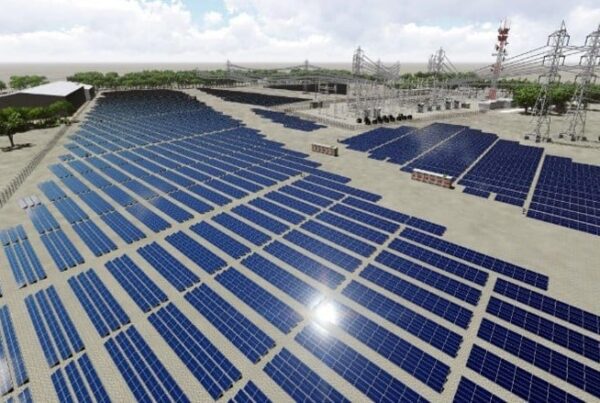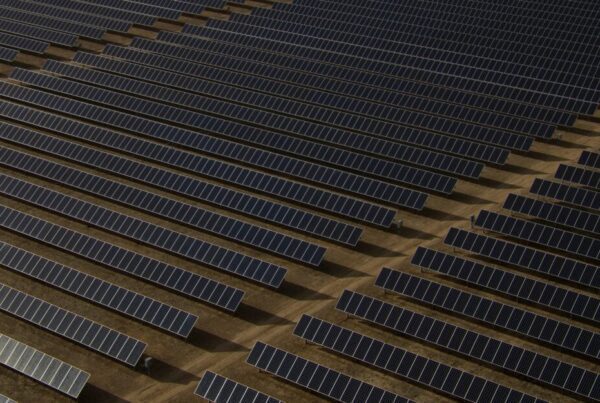
Panelists picked this up in the next discussion, which focused on the “priorities, pain points and progression for developers” in Europe. Warren Campbell, COO of independent power producer (IPP) Alight, said: “There are all sorts of challenges (for solar developers), but the grid is, for me, the fundamental one.”
He continued: “It’s interesting to remember that there are projects in many countries that are in development. In Italy, in Sweden, there is something like 100 times the amount of requests for grid access as there are actual projects being built each year. So the constraint isn’t that there aren’t developers trying to build projects; it’s more a question of getting projects to fruition.”
Regulation matters
Part of the issue is legislative. Holger Bang, chief investment officer at Nordic Solar said that the industry needs to see “ambition coming from Brussels; that we see them go all the way in terms of grid, because there are plans for the grid, but they’re always extremely delayed and very untransparent.”
Recent reports from the International Renewable Energy Agency (IRENA), and reportage from PV Tech Premium, have shown that grids and transmission infrastructure are a global issue, and hold the potential to either spur the energy transition to new heights or to hold it back from where it could be.
Asked about how member states can facilitate the industry to achieve their respective deployment targets, Karen Boesen, CFO at Sonnedix said: “I think, again, it comes back to the grid. It’s not only about access, it’s about creating an environment of flexibility and about creating regulation.” She said that without regulation companies are investing with uncertainty.
Bang elaborated on the issue: “In quite a few markets we actually see that it’s being imposed on the developers to build out the grid, which was not built out for many years. There needs to be more collaborative effort – civil society needs to have an interest to find out how we get permitted grid connection lines, how we finance it, how we operate it, because it can’t just be the industry on our side.”
Could Italy be a model for Europe?
The Italian grid operator, Terna, recently announced US$18 billion of investment into the country’s grid by 2028, with a view to expanding and modernising it to shift from the traditional, centralised system of power plants to the more decentralised model necessitated by widespread use of renewable energy.
This level of investment could transform the system, but in its current state it is far from perfect. Speaking to PV Tech later on at the LSS EU conference, Cristiano Spillati, managing director of Italian renewables developer Limes, said that the approvals process for access to the Italian grid is causing backlogs.
“There is no barrier to entry,” he said of the low cost to apply for a grid connection permit in Italy, which he claimed is around €3,000 (US$3,247.30). “There are many individuals or companies who do only the first two steps; they sign [for] a piece of land, they get the connection point and, even without accepting it … you have the idea of a project that you can sell for much, much more [than you spent on the applications].”
“This is why you have – in solar alone – 140GW of connection requests.”
The topic of Italy’s grid appeared again in the conference’s final panel discussion, which was on “The EU Grid: Investment into Transmission & Distribution Infrastructure”. Pietro Radoia, senior solar analyst at Bloomberg said that “developers’ behaviour has to change … to try not to clog the grid all at the same time.”
He used Italy as an example, where PV deployments are concentrated in the sunnier and more spacious south of the country – particularly in Sicily and Sardinia – whilst the majority of electricity demand is in the north. With this come the physical barriers inherent to shipping power across the length of a country.
Short-term solutions, storage and flexibility
Building out transmission infrastructure and redesigning grids is a long-term endeavour, but in the summit’s opening session, Campbell said that he sees a number of short-term fixes for grid bottlenecks:
“A lot of DNOs (Distribution Network Operators) are still fairly slow in adjusting to the fact that this is not a concentrated production system and have not built up the resources to handle a large number of applications to the grid.”
He continued, saying that this has led to developers and projects being hampered by “administrative awkwardness, even when there aren’t technical constraints in the grid.” He said: “There is no excuse. Those kinds of problems can and should be fixed.”
Moreover, Campbell said that the market rules around “interoperability, for example, and capacity contracts for batteries aren’t in place. If you put those in place with some relatively small grid changes you’ll make batteries bankable and you’ll allow more solar projects into the same area of the grid without doing technical enhancements.”
Industry figures have said recently that the business case for energy storage and co-located solar and battery projects in Europe needs defining before the technology takes hold (premium access).
Speaking at the close of the event, Berto Martins, director for energy markets at Portuguese energy company EDP said that grid upgrades should make use of as much innovation and technological flexibility as possible.
“In the very short term there is a need to invest in the grid,” he said. “But there are flexibilities that can be found within the grid that will also help to manage a future energy system with much more renewables, that don’t need [large] grid investments.
“It is important to be 100% sure that what we call investments into the grid are really necessary for the future and not something than can be replaced with flexibility [such as energy storage or vehicle-to-grid charging].” However, he said that the current discussion around the grid is not sufficiently geared towards this.
Martins continued: “Everything should be managed in a much more clever way, with many more flexibilities,” in order to lessen the costs of full-scale grid upgrades for energy consumers of the future.
This built on a point that Campbell made in the opening session, where he said that many developers find it hard to secure long-term offtake agreements for battery energy storage projects in European markets. “Whether it’s regulation, or whether it’s simply players seeing the opportunity to secure battery capacity and then be able to play with it; the solar industry is currently not equipped to roll out large-scale battery projects.”





